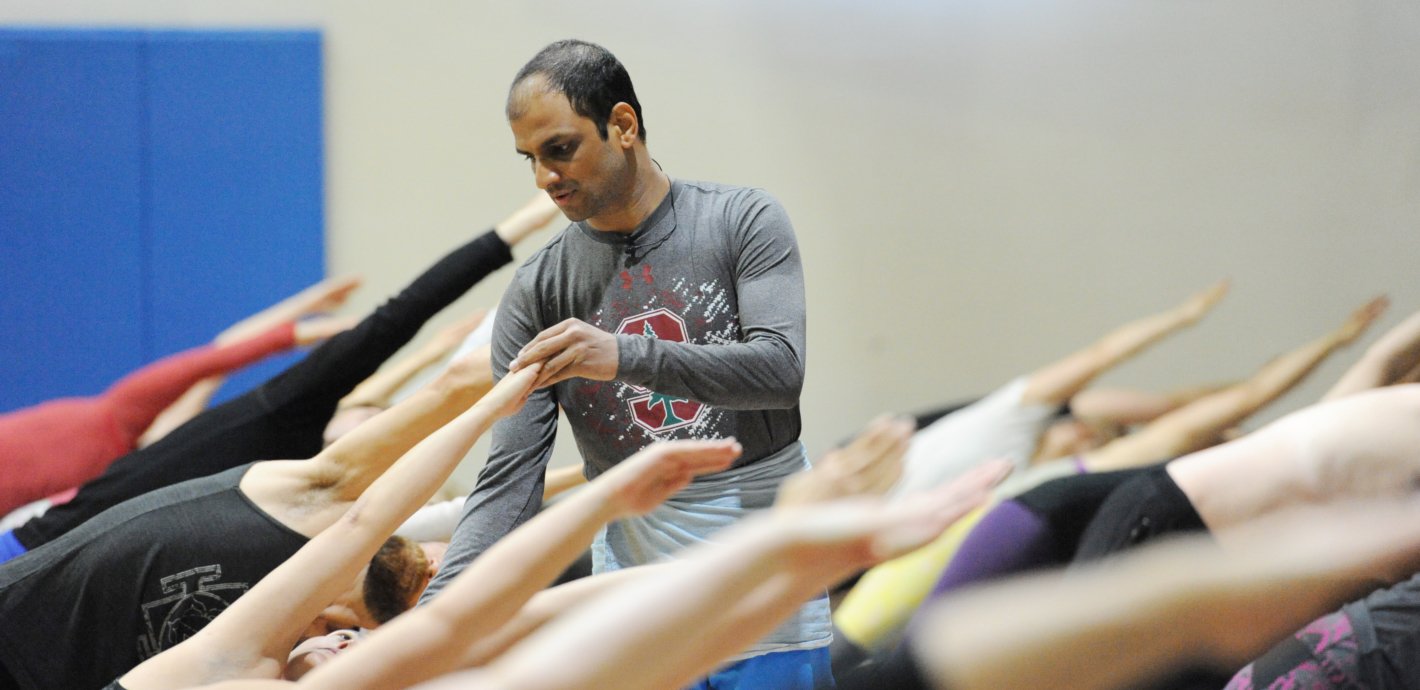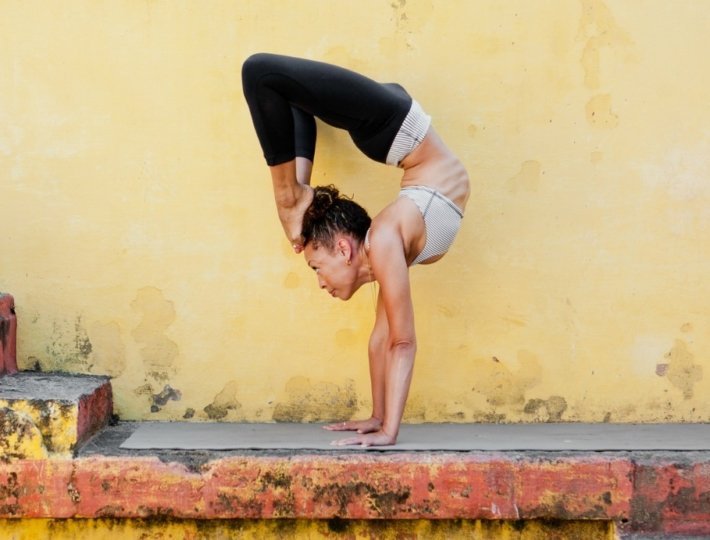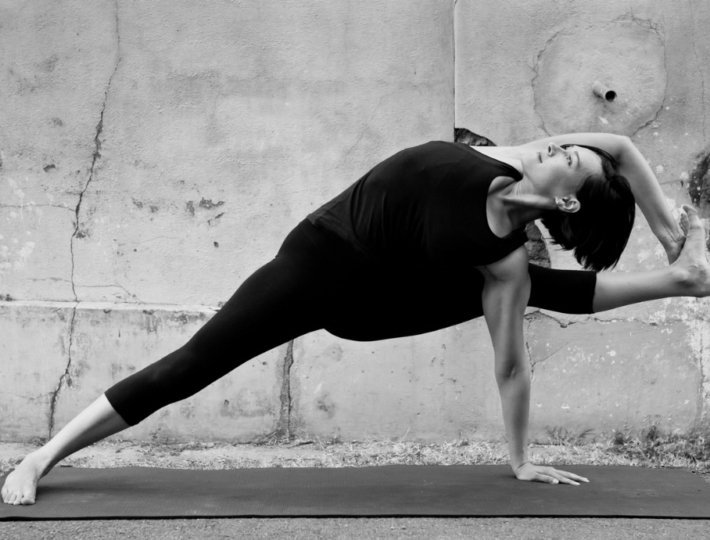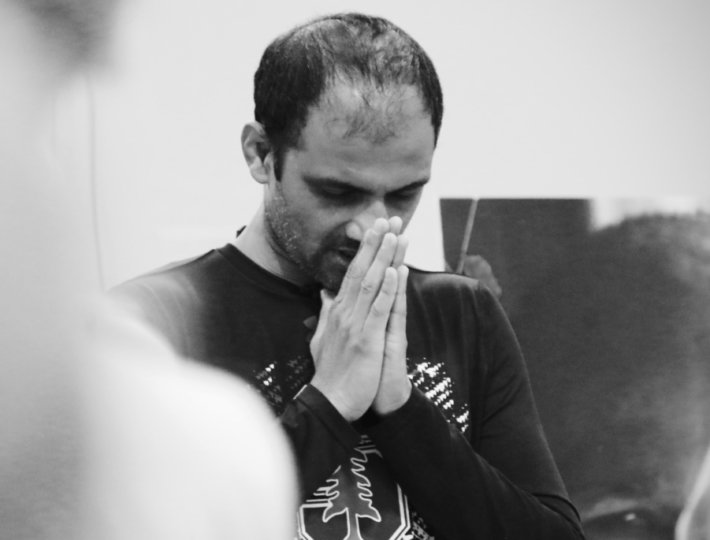When pizza was very new to India, some companies wanted to market themselves to get business, so they created a new pizza called “Gobi Manchurian Pizza.” We were very interested, so we ordered one to our house. It was a regular pizza with pieces of Gobi Manchurian, a Chinese dish, on top. Many people bought it. It was new and different and tasty, but it wasn’t healthy. Similarly, this is how yoga has become: Tasty and attractive, but not healthy.
Today, there are so many styles of yoga. People put their surname in front of the word yoga and invent a new style. They hope to get many followers. They create so many videos, but it’s like junk food. It’s tasty, it looks good, but it’s not healthy. People look at these styles as yoga, they try them, and think they are doing yoga, but they are not.
Ashtanga yoga is not a style of yoga. It is a method to explore something far more than handstands. Many people see handstand and leg-behind-the-head and think that is what Ashtanga yoga is. But Ashtanga yoga is a method to experience what yoga is, to understand who we are, how to be more responsible, how to live in this world as better people. Ashtanga yoga is a method.
I’ve said this many times, but students need to be reminded of the fundamentals of Ashtanga yoga: the yamas and niyamas. They are the key ingredients to establishing and practicing yoga. It’s like making a dish from a recipe: You need these ingredients or else it won’t work, and you won’t be doing yoga.
Related: An In-Depth Look at Yamas and Niyamas
The Ashtanga method has eight limbs. The first four are the external pillars: yama, niyama, asana, and pranayama. Yama has sublimbs, which are ahimsa, satya, asteya, brahmacharya, aparigraha. The niyama sublimbs are saucha, santosha, tapas, svadhyaya, Ishvara pranidhana. These are all very important ingredients essential for our spiritual journey. If you want to get deeper in your practice, these ingredients are indispensable. Without these ingredients, you will never understand yoga. You will live your entire life missing out and thinking yoga is what flexible people do in photographs and videos like leg-behind-the-head and handstands. It’s attractive, it makes for a nice photo, but it is not yoga.
The remaining four limbs—pratyahara, dharana, dhyana, and samadhi—are internal practices. Once the first four limbs are established, the other four will automatically happen. You don’t have to try, they will automatically happen. Of course, these are higher, more subtle levels of yoga. To achieve these, you have to get rid of many patterns, attachments, dispositions, many things.
This will be a life-long practice and the real transformation happens once one is educated in all the limbs. Without understanding yoga through proper education, it is impossible to understand what yoga is. Yet what is meant by education here is the practice, putting theory into practice, not necessarily a formal education.
My grandfather, Sri K. Pattabhi Jois, used to always say “99% practice, 1% theory,” but oftentimes, people got this wrong. They practiced asana from morning until evening. What he meant was to practice the theory, the yamas and niyamas, all the time. To do this, you don’t sit around and read about it in books, you have to live it. Can you expect to calm the mind by reading citta vritti nirodha (the second sutra of the Yoga Sutras)? Simply reading it, even a thousand times, won’t make it happen, and it will probably do just the opposite. Yoga theory must be put into practice all the time. Only when you apply all the things in your daily life will citta vritti nirodha happen.
For us, however, what is important is to be calm every day, to have a peaceful life everyday. This is what we are focusing on. Someone can be very famous one day and then the next fall out of favor. Asana will come and go, money will come and go, fame will come and go. What we have to do is keep ourselves calm, steady and stable. This is what asana gives us.
How many of you can sit still in one place for long periods of time having control of your mind? To bring the vrittis, or the fluctuations of the mind under control you must have stability found in a practice. This is the method to gain equanimity. Samatvam yoga uchyate. Samtvam is calmness, balance, equanimity. This is what yoga is. It is a lifelong practice of key ingredients for the entirety of your life. The proper fundamentals will help the stability grow, and thus, the yoga to happen. If it can happen to me, it can happen to you. We are not different. It takes a firm, positive outlook. Yoga can happen to anyone when we put in the proper ingredients.
Photography by Julia Lofstrand












Comments (0)